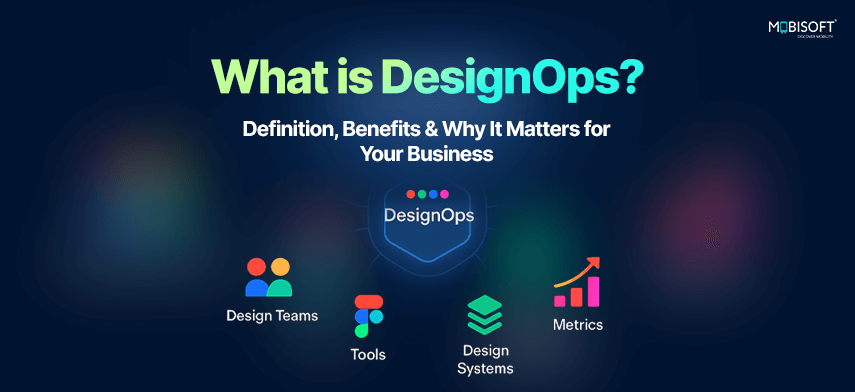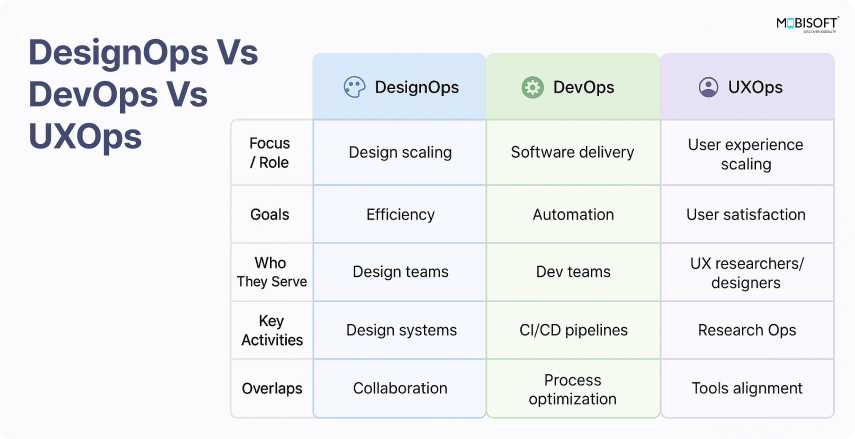What is DesignOps? Definition, Benefits & Why It Matters for Your Business

As design teams grow, so does the pressure to deliver stronger user experiences. Many companies find it hard to keep up. That’s exactly where DesignOps steps in. It’s a way to bring order to design work, improve how teams collaborate, and scale practices without letting quality slip.
If you’ve ever wondered what DesignOps means or looked for a clear DesignOps definition, this section will clear it up. We’ll look into its purpose, impact, and how it works in practice.
What Is DesignOps?
DesignOps, short for Design Operations, is the setup of processes, systems, and tools that let design teams work better. The aim is simple: reduce friction, encourage teamwork, and keep results consistent even as teams get larger.
It is helpful to think of this in the same way as DevOps, but applied to design. Just as DevOps has changed the way software is delivered, DesignOps is changing how design operates in an organization. It brings designers, product managers, engineers, and business stakeholders together, and everyone is working toward the same goals for business objectives. This approach is often described as the DesignOps framework, helping companies manage design at scale.
Explore our UI/UX DesignOps services to see how organizations are structuring design processes effectively.
Why DesignOps Matters

Before we talk about efficiency, let’s take a second and take a step back. Picture your design team in a disorganized kitchen. Without process, everyone is running around, ingredients disappear, and food comes late.. DesignOps is an organized kitchen that provides a space where the team can focus on making great experiences without colliding with one another.
Optimizing Design Efficiency
DesignOps matters because it prevents design teams from descending into chaos. Without systems, files go missing, projects clash, and progress stalls.
With the right DesignOps processes, everything runs smoothly. Workflows are established, tools assist with repetitive work, and optimizing design workflows with DesignOps cuts out delays. This leads to fewer duplicate tasks, issues, and more projects being completed on time and on budget.
This affects the whole company. When design runs faster and mistakes drop, products move through development quickly. And the business gets ideas into the market before competitors.
Learn more about streamlining UX workflows with DesignOps for scalable and efficient operations.
Read More: https://mobisoftinfotech.com/resources/blog/ui-ux-design/what-is-designops-definition-benefits
- AI
- Vitamins
- Health
- Admin/office jobs
- News
- Art
- Causes
- Crafts
- Dance
- Drinks
- Film
- Fitness
- Food
- Jogos
- Gardening
- Health
- Início
- Literature
- Music
- Networking
- Outro
- Party
- Religion
- Shopping
- Sports
- Theater
- Wellness


